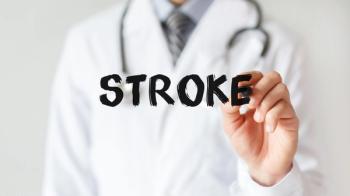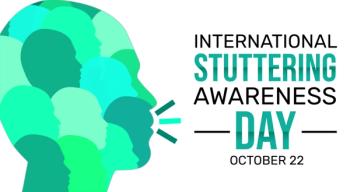
Neurology NewsfeatureNeurology Subspecialization Takes a Step Forward
Subspecialization within the practice of neurology is now reality with the recent approvals of subspecialty designations for neuromuscular pathology, headache medicine, and neuro-oncology. The American Academy of Neurology (AAN) Committee on Neuromuscular Pathology sponsored the neuromuscular pathology membership application. Two associations--the AAN Headache and Facial Pain Section and the American Headache Society--sponsored the headache medicine application.
Subspecialization within the practice of neurology is now reality with the recent approvals of subspecialty designations for neuromuscular pathology, headache medicine, and neuro-oncology. The American Academy of Neurology (AAN) Committee on Neuromuscular Pathology sponsored the neuromuscular pathology membership application. Two associations--the AAN Headache and Facial Pain Section and the American Headache Society--sponsored the headache medicine application. The AAN section devoted to that subspecialty sponsored the neuro-oncology application. Subspecialty designation by the United Council for Neurologic Subspecialties (UCNS) encompasses both accreditation and certification. Accreditation is aimed at making more specialized education available, and certification is intended to encourage individuals to develop greater competence.
With 4 approved subspecialty memberships, 4 currently applying, and 3 sharing an intent to apply for certification and accreditation, UCNS has begun to fulfill its mission, according to its chair, Stephen M. Sergay, MD, of Tampa Neurology Associates, Tampa, FL. "This is an important milestone for the subspecialties of neuromuscular pathology and headache medicine," said Sergay. "We're glad to welcome more subspecialties into the UCNS, and we look forward to helping subspecialties as they grow through our accreditation and certification processes."
Behavioral neurology and neuropsychiatry became the first subspecialty within the UCNS last summer. Fellowship training programs that will provide accredited training in the subspecialty for the 2006 academic year will be submitting their application forms for review this month.
On approval of membership, a new subspecialty selects a representative to work with the UCNS accreditation council in developing the training program accreditation application. In addition, the subspecialty selects individuals to sit on its examination committee to develop the certification examination in accordance with the UCNS consultant and staff.
The UCNS process is inclusive by nature. The organization believes it is important to involve approved subspecialties in the accreditation and certification process. One group of representatives will act as a standing council for accreditation and another will define examinations that will establish certification. Both will work in concert with the UCNS.
Approved specialties gain a voting seat on the 9-member UCNS board. Jerry Mendell, MD, represents the neuromuscular pathology subspecialty, and Alan Finkel, MD, represents headache medicine. Mendell is director of the Center for Gene Therapy at Ohio's Columbus Children's Research Institute and a professor of pediatrics and neurology at Ohio State University College of Medicine and Public Health. Finkel is an associate professor of neurology at the University of North Carolina at Chapel Hill School of Medicine and director of the university's headache clinic.
The UCNS, which was incorporated in 2003 and began operations in 2004, is sponsored by 5 parent organizations: the AAN, American Neurological Association, Association of University Professors of Neurology, Child Neurology Society, and Professors of Child Neurology. Sergay said it's no accident that the parent associations are also the major teaching associations. "We wanted subspecialization to be very academically rigorous. We also wanted to make sure that the overview teaching organizations of neurology would spearhead the process and that no subspecialty area with a vested interest would define how the organization would work."
The concept of a formal subspecializing body emerged some 10 years after the AAN had created special-interest "sections" within the Academy. The sections were designed to serve the growing need for networking and education among members focusing on an ever more specialized area of medical practice. Now approximately 11,000 neurologists belong to 1 or more sections.
Mendell, who helped sponsor one of the more uncommon areas of subspecialization--neuromuscular pathology--said accreditation would lend credibility and consistency to training programs. Programs that primarily have been internally driven by an institution will benefit from uniform course standards, said Mendell.
SPECIALIZATION IS A CONTINUING TREND
"At my last count, there were 37 primary areas of specialization, 75 areas of subspecialization, with many more on the way," said Rosemary A. Stevens, PhD, Stanley I. Sherr Professor of History and Sociology of Science at the University of Pennsylvania in Philadelphia. In a keynote address at a conference of the American Board of Medical Specialties in 1999, she suggested that the marketplace might be the cause of increased specialization, with physicians and specialty associations being the "buyers."1
In the United States, medical school graduates who are entering residencies are choosing specialties over primary care careers in growing numbers. According to a report published in the Journal of the American Medical Association in 2003, medical student interest in primary care careers decreased from 35.6% in 1999 to 21.5% in 2002.2 The study's authors looked at 3 databases, the Association of American Medical Colleges graduation questionnaire, the National Resident Matching Program, and the National Graduate Medical Education census, to investigate trends in the number of US-based medical doctors entering residencies in primary care, general or subspecialty surgical, and non-primary care and nonsurgical specialties from 1987 to 2002.
Sergay said he is "amazed at the progression of interest in subspecialization. According to the latest statistics, 75% of graduating residents entered subspecialty fellowship programs."3
Membership in the UCNS is the first step in the UCNS accreditation and certification processes. The UCNS accreditation council works with subspecialties to finalize requirements for fellowship programs. Applications for accreditation of the program then can be submitted to the UCNS. Its certification council works with subspecialties to appoint experts within the subspecialties to develop certification examinations.
According to Sergay, "Subspecialty accreditation takes the evolution of medicine a step further by offering clearly defined training standards for physicians and recognition of competence which will enhance the quality of care for patients." (See also Table.)
The UCNS also serves the need of postresidency programs, most of which are not now accredited by any organization. The UCNS offers an opportunity to standardize program requirements within a neurologic subspecialty. This is intended to enhance quality of training, which benefits both physicians and patients. Accreditation and standardization set a strong foundation for medical research and practice, which are priorities for the sponsoring organizations.
Through information presented at annual meetings, a Web site (www.ucns.org), and newsletter, the UCNS is now gaining a higher level of exposure. "We have found a very warm reception for the content and also for the type of organization we have put together," said Sergay. "Nowadays when we talk about the UCNS, it is no longer about the concept, but rather, 'how do we get started with our application?'"
AFTER APPROVAL, WHAT'S NEXT?
A survey of neurologists revealed that patients with headache were the largest group of continuously followed patients.4 Finkel, a headache specialist for 15 years and the headache medicine subspecialty's nominee for the UCNS board of directors, said his group is now working on developing procedures for medical training accreditation and on outlining steps for applying for individual certification.
The goal of the new organization is to offer subspecialty residency programs that are not currently offered by the Accreditation Council for Graduate Medical Education or the credentialing programs of the American Board of Psychiatry and Neurology, said Finkel. "We have very stringent guidelines," he said. "We don't want a significant part of a new subspecialty to be part of a current program."
Finkel's advice for other groups whose members are contemplating applying for subspecialization: "Be prepared to work a great deal and devote hundreds of hours of time to the process."
INCENTIVES FOR MEDICAL SCHOOLS?
In Finkel's view, given his experience as a headache specialist, a need exists to expand training in medical schools on the treatment of headache so that junior practitioners don't have to learn about it on their own. "If we're going to have an impact on the students, we need more basic lectures on headache, and we need to offer them more exposure to someone who sees headache in their practice."
Finkel believes certification of educational programs has the potential to have a "huge impact on training and an opportunity for change." Subspecialty certification and accreditation can increase the visibility of a subspecialty area and help draw patients as well as interest from research scientists.
Finkel hopes the subspecialty designation, along with recent survey results (to be published in the July issue of Headache, the journal of the American Headache Society) will tilt more interest toward headache research. The survey on the status of headache training found that 93% of neurology department chairs believe headache should be a focus in medical training, 97% believe headache is a valid disorder, and 93% believe headache represents a significant public health problem, but only 39% think medical school training on headache is adequate.
Finkel predicts that in the very near future, subspecialty designation won't have a significant impact on residents and students. However, for medical institutions, it offers an incentive to start making better use of headache specialists on the teaching staff. More than 60 medical school neurology departments already claim to have headache experts on staff, although that expertise isn't reflected in medical school curricula, he said.
In particular, the subspecialist designation gives headache specialists earned recognition among peers. Some other specialists view those who treat headache as "a necessary caboose" within the profession. Headache specialists with 20 to 30 years of experience consider subspecialty certification "a huge deal," said Finkel.
"The neurology public seems to accept the role the UCNS wants to play," added Sergay, who will soon leave as head of the UCNS to prepare to take the reins as president of the AAN in 2007. "I don't think there will be a misstep when I leave. I feel like our whole package is there. It's not dependent on my presence."
Membership requirements and applications are available online at www.ucns.org. The Web site also includes information on the accreditation and certification processes. *
REFERENCES
1. Stevens RA. Professional competence and board certification, Educational Conference Program. American Board of Medical Specialties; March 18-19, 1999; Chicago. Available at: http://www.abms.org/Downloads/Conferences/ Stevens%20Paper.doc. Accessed May 25, 2005.
2. Newton DA, Grayson MS. Trends in career choice by US medical school graduates. JAMA. 2003;290:1179-1182.
3. Graduating Neurology Residency Survey. American Academy of Neurology and Association of University Professors of Neurology; 2000.
4. Swarztrauber K, Lawyer BL. Neurologists 2000: AAN Member Demographics and Practice Characteristics. American Academy of Neurology; 2001.
Newsletter
Receive trusted psychiatric news, expert analysis, and clinical insights — subscribe today to support your practice and your patients.

















